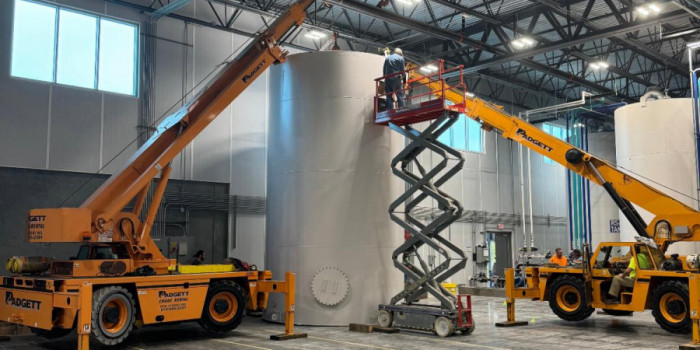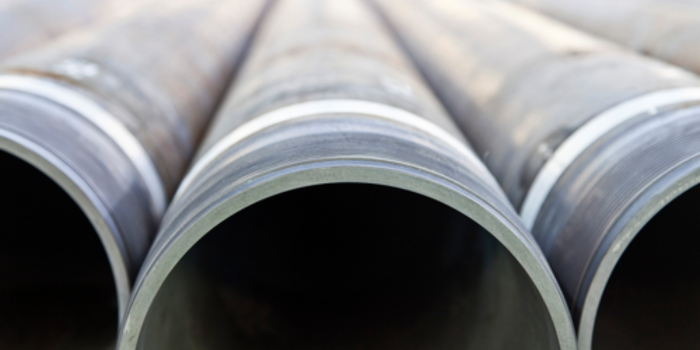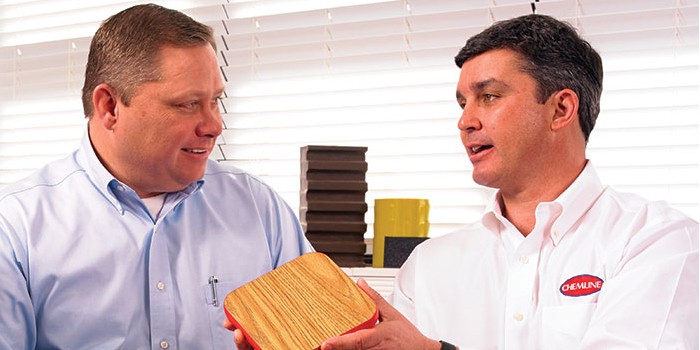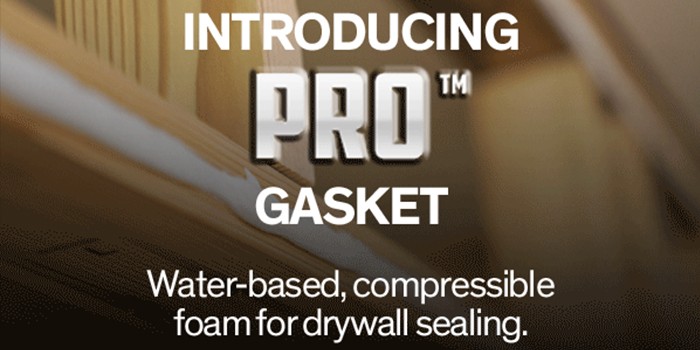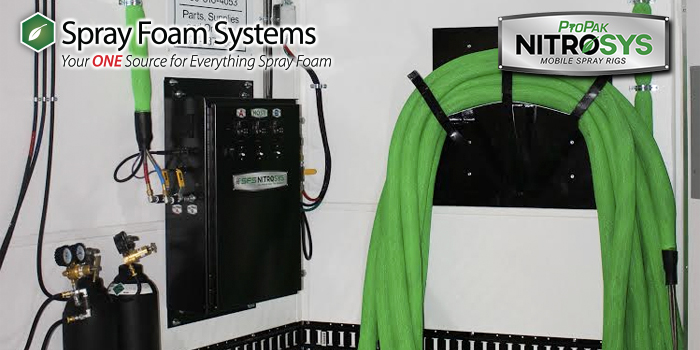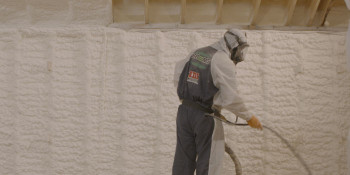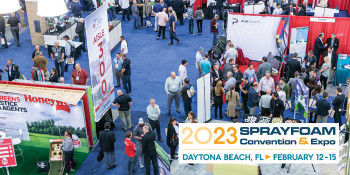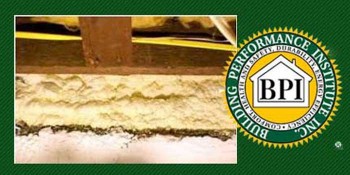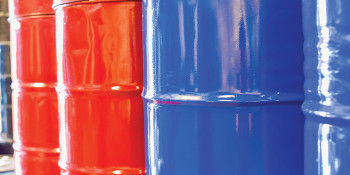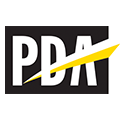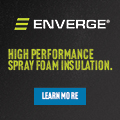Avoiding Material Miscalculations


Spray Foam Magazine – Show Issue 2025 – Unfortunately, we see this more often than not. One is on a nice coating (or spray foam) project, claims to be applying at the proper rate and thickness, measured the area carefully, at least twice no less, but finds themselves running short on material. What could it be? Most likely in their thinking is that the supplier must have shorted them on material, or something is wrong with the product… OMG!
To address this discussion, one needs to have a basic understanding of coating technology and the application process. The amount of coating required for a project can depend on various factors. These factors include:
- What is the percent solids content of the coating system?
- What Dry Film Thickness (DFT) is specified?
- What is the surface area and profile of the substrate?
- And of course for spray foam, what density foam are you applying?
Type of coating system and thickness requirements:
As one knows, there are a variety of coating systems on the market. These include polyurea, polyurethane, epoxy, acrylic, silicone, etc., all with their own specific characteristics. While not a discussion of the various types, the focus and discussion here will relate to the solids content of the coating systems. The required application thickness would be set forth in either the project specification, or the requirements of certification for use of materials such as that for intumescent coatings for burn performance.
For fast-set spray polyurea, polyurethane and hybrids, the Wet Film Thickness (WFT) is the same as the Dry Film Thickness (DFT) as these are 100% solids. The rule of thumb is one gallon of mixed systems will cover 100 sq. ft. at 16 mils (0.016 inches), or one liter for one m2 at 1mm thickness. However, WFT measurements are not practical due to the fast gel or set time of the polyurea spray system. For high solids coatings (>90 %) or solvent systems, and yes water is a solvent, the DFT and WFT are not the same. For example:
DFT = WFT X (% solids of system) or WFT = DFT / (% solids of system)
So, in these cases, WFT is always going to be greater than the resulting DFT. Most suppliers list on the product TDS the specific spreading rate, such that the proper amount of material can be secured for the project. Proper applied DFT is essential to overall performance of the system, as well as meeting the requirements of specific Certification Testing.
Most importantly for WFT, who measures this? The inspectors or the applicators? The correct answer is the applicator, the one holding the spray gun! DFT measurements of course are made after applied coating is set and dry, and is performed in the inspection process of application.
I recently received the sticker above related to WTF or WFT? While WFT is the correct “abbreviation” or “initialism” to use, WTF may be appropriate for the current project situation… LOL
Substrate surface considerations:
Is there a difference between measured perimeter square area vs square area of surface texture? Sad to say that many don’t believe there is a difference here, but this can be significant!
When applied to a solid, smooth substrate such as “smooth” steel or over wood, coating requirements seem to be pretty straight forward related to overall surface area. But what happens if that substrate is corrugated or rough, as in the case with a spray foam surface or properly prepared concrete? Does the same theoretical model for material requirements fit here as well? Well of course they DO NOT!
Some excellent Technical Documents related here include SPFA-121 Spray Polyurethane Foam Estimating Reference Guide, SPFA-145 Surface Texture of Spray Polyurethane Foam, and ICRI Guideline No. 310.2R-2013 for CSP – Concrete Surface Profile.
For foam surface textures, the following is provided for coating requirements depending upon the surface texture of the foam. This is additional material requirements for the amount of coating on the measured square area to apply to. Keep in mind that the coverage information provided on the specific coating Technical Data Sheet assumes a smooth surface. TABLE 1 is meant as a general guideline for surface texture.
On a side note here, meant as an information discussion, and not to re-start the controversy on “how many board feet” of yield per set of closed-cell spray foam. But facts are facts, and matter can be neither created nor destroyed. The big question is, “is board-feet yield the same as square-feet of coverage?” No not necessarily, and unfortunately, some may be slightly confused on this. Just a reminder, for board-feet, that is one-inch thickness, 12-inch by 12-inch. And yes, I know, only using imperial units here, but fully aware of metric units. Also, 1.7 pcf density CC will provide more board-feet of yield per drum set than 2.0 pcf density closed-cell foam. So, it is important to note what density CC foam you are using, not that you are using CC foam when asking questions.
For purposes of this example and to explain, with exactly prepared 2.0 pcf density foam, that will yield approximately 4000 board-feet per 1000 lbs drum set. If that is applied at exactly one-inch thickness, you will cover 4000 square-feet. Take TABLE 2 based upon a per set.
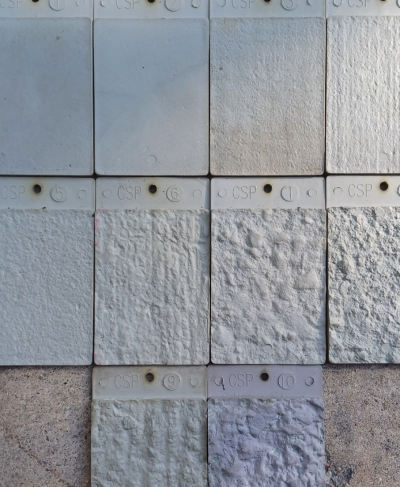
So, at just a mere quarter-inch difference less in applied thickness of 2.0 pcf CC foam, that represents a ~27% increase in square area covered. Of course, that increase in square-feet coverage will actually be greater for less than 2.0 pcf CC foam. Regardless of the thickness you apply at, the board feet of yield is still basically the same for the constant density. However, the square feet of coverage will be different. And thinner is not better per say.
Conclusion
Understand and evaluate the conditions of your substrate before application of these coating systems. Read and understand the project specification and material TDS related to applied thickness requirements before you start the project. Follow a proper written specification with manufacturer's recommendation. And most importantly, please don’t take shortcuts, justifying because you saw a video or comment on Facebook, YouTube, or TikTok that may not be appropriate.
Running short of a coating system (or spray foam) on a current project does not mean you start applying the rest thinner or taking shortcuts! This is not the proper “character” and will lead to call-backs, failures and even possible “shaming” on various social media platforms.
Disqus website name not provided.






